BioProfessor
Silver Member
Hello All,
It's been a bit since I've posted. Long story short, I got invited to the UK to detect a 15th Century Priory the first of June and my wife fell down the steps at the B&B and broke her leg and ankle. So I've been "Occupied."
I have spent the last 4 summers in Amsterdam. Trying to find a place to detect is never easy and when it is summer and things are in crop, it is almost impossible. I decided to change tactics this year and try to find places to hunt that are not in crop but are in pasture. Problem with this is that there is a LOT of pasture here. The Netherlands has been reclaiming land for a long time. You might find out you are hunting a nice pasture that was under water 100 years ago and all that is there to find now is stuff that fell off the tractor or the cow. Not good. So the secret is to find pasture that was NOT under water 100 years ago. Turns out that is not so difficult to do. The Dutch like maps. They have maps of everywhere and they have been doing it for a LONG time. And somebody had the great idea to tie the old maps to a modern map of the country. So you can go to a website and move your cursor around the country and click on an area and all the old maps that include that part of the country will come up. It is common to find maps of places from the 17th and 18th century covering the area you are interested in.
Since the water table is so high, they have to have canals in the fields to keep the water regulated and these canals are on the maps. The canals are also visible on Google Maps. So if you find a map from the 1600's that shows a farmer's field was a pasture with canals and a Google Map that shows the same canals and it's pasture now. You can hunt a pasture that you know has been there for a least 400 years. Piece of cake.
I spent a lot of time looking for these places and getting permission from the farmers. I have permission now from 5 farms to hunt their pastures. I hunt it just after they mow for hay or when they move the animals because the grass is too short. It is a perfect place to hunt. Almost like a pool table.
As I hunt these places, I'm finding the areas that have "stuff." Sort of the "hot spots" in a huge pasture. The finds cover quite a range of time - about 5-600 years. It's cool.
Here are some examples of things that are starting to come up. Enjoy.
And here are the coins I forgot. The first is a 1550 French Orb Jetton and the second is a 1599 8 Pfenning.
Daryl
It's been a bit since I've posted. Long story short, I got invited to the UK to detect a 15th Century Priory the first of June and my wife fell down the steps at the B&B and broke her leg and ankle. So I've been "Occupied."
I have spent the last 4 summers in Amsterdam. Trying to find a place to detect is never easy and when it is summer and things are in crop, it is almost impossible. I decided to change tactics this year and try to find places to hunt that are not in crop but are in pasture. Problem with this is that there is a LOT of pasture here. The Netherlands has been reclaiming land for a long time. You might find out you are hunting a nice pasture that was under water 100 years ago and all that is there to find now is stuff that fell off the tractor or the cow. Not good. So the secret is to find pasture that was NOT under water 100 years ago. Turns out that is not so difficult to do. The Dutch like maps. They have maps of everywhere and they have been doing it for a LONG time. And somebody had the great idea to tie the old maps to a modern map of the country. So you can go to a website and move your cursor around the country and click on an area and all the old maps that include that part of the country will come up. It is common to find maps of places from the 17th and 18th century covering the area you are interested in.
Since the water table is so high, they have to have canals in the fields to keep the water regulated and these canals are on the maps. The canals are also visible on Google Maps. So if you find a map from the 1600's that shows a farmer's field was a pasture with canals and a Google Map that shows the same canals and it's pasture now. You can hunt a pasture that you know has been there for a least 400 years. Piece of cake.
I spent a lot of time looking for these places and getting permission from the farmers. I have permission now from 5 farms to hunt their pastures. I hunt it just after they mow for hay or when they move the animals because the grass is too short. It is a perfect place to hunt. Almost like a pool table.
As I hunt these places, I'm finding the areas that have "stuff." Sort of the "hot spots" in a huge pasture. The finds cover quite a range of time - about 5-600 years. It's cool.
Here are some examples of things that are starting to come up. Enjoy.
And here are the coins I forgot. The first is a 1550 French Orb Jetton and the second is a 1599 8 Pfenning.
Daryl
Amazon Forum Fav 👍
Attachments
-
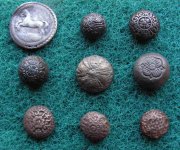 Netherlands1.jpg96.3 KB · Views: 595
Netherlands1.jpg96.3 KB · Views: 595 -
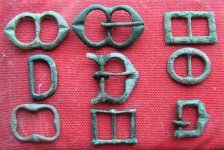 Netherlands2.jpg98.8 KB · Views: 594
Netherlands2.jpg98.8 KB · Views: 594 -
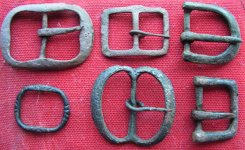 Netherlands3.jpg99.4 KB · Views: 596
Netherlands3.jpg99.4 KB · Views: 596 -
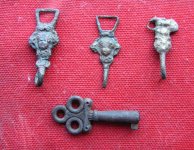 Netherlands4.jpg95.1 KB · Views: 584
Netherlands4.jpg95.1 KB · Views: 584 -
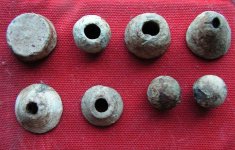 Netherlands5.jpg86.9 KB · Views: 592
Netherlands5.jpg86.9 KB · Views: 592 -
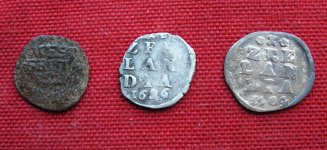 Netherlands6.jpg95.2 KB · Views: 591
Netherlands6.jpg95.2 KB · Views: 591 -
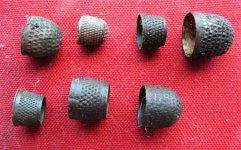 Netherlands7.jpg97.9 KB · Views: 577
Netherlands7.jpg97.9 KB · Views: 577 -
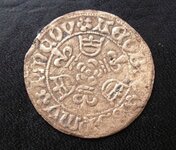 TonCoin1.jpg67.6 KB · Views: 556
TonCoin1.jpg67.6 KB · Views: 556 -
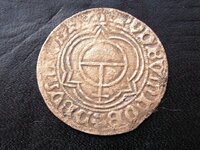 TomCoin2.jpg87.4 KB · Views: 556
TomCoin2.jpg87.4 KB · Views: 556 -
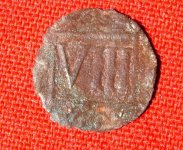 Better8Coin1.jpg92.4 KB · Views: 559
Better8Coin1.jpg92.4 KB · Views: 559
Upvote
0



 i also have been studying the Dutch and there early arrival to New Amsterdam and out here on the Northfork of Long Island where i live in local fields in the early Spring before new growth, and wooded area,s i have found many coins and relics dated back to the early 17th century mostly silver and a few bronze shoe buckles plus many buttons ,those coins you have are awesome as is everything else Great digs
i also have been studying the Dutch and there early arrival to New Amsterdam and out here on the Northfork of Long Island where i live in local fields in the early Spring before new growth, and wooded area,s i have found many coins and relics dated back to the early 17th century mostly silver and a few bronze shoe buckles plus many buttons ,those coins you have are awesome as is everything else Great digs  Dd60
Dd60
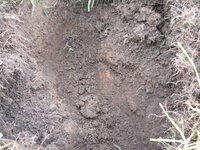
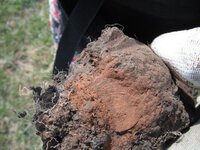


 CalGail
CalGail I'm having a heart attack. It's treble banner finds. I don't even know what it better, coins, buttons, buckles or thimbles.
I'm having a heart attack. It's treble banner finds. I don't even know what it better, coins, buttons, buckles or thimbles.


